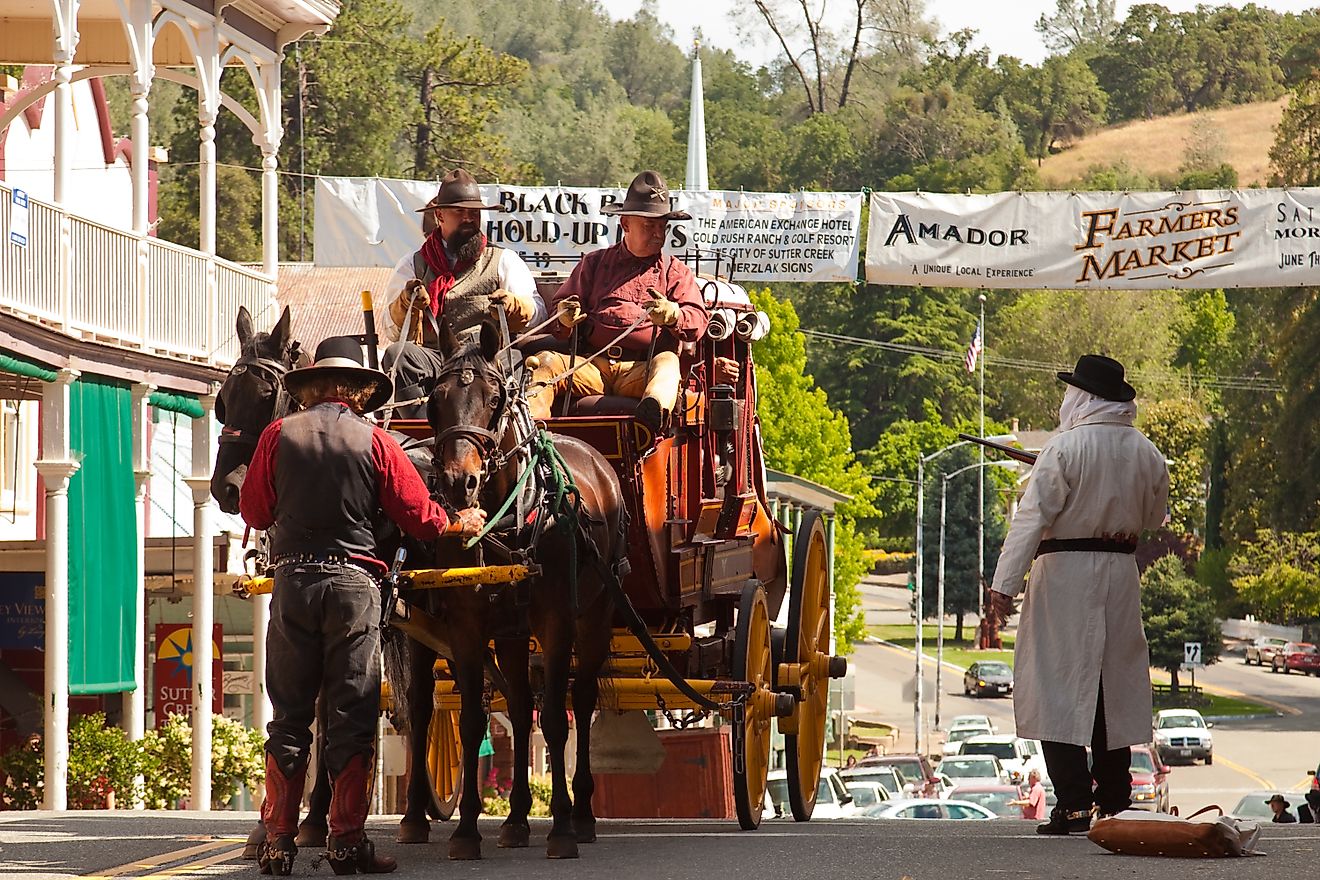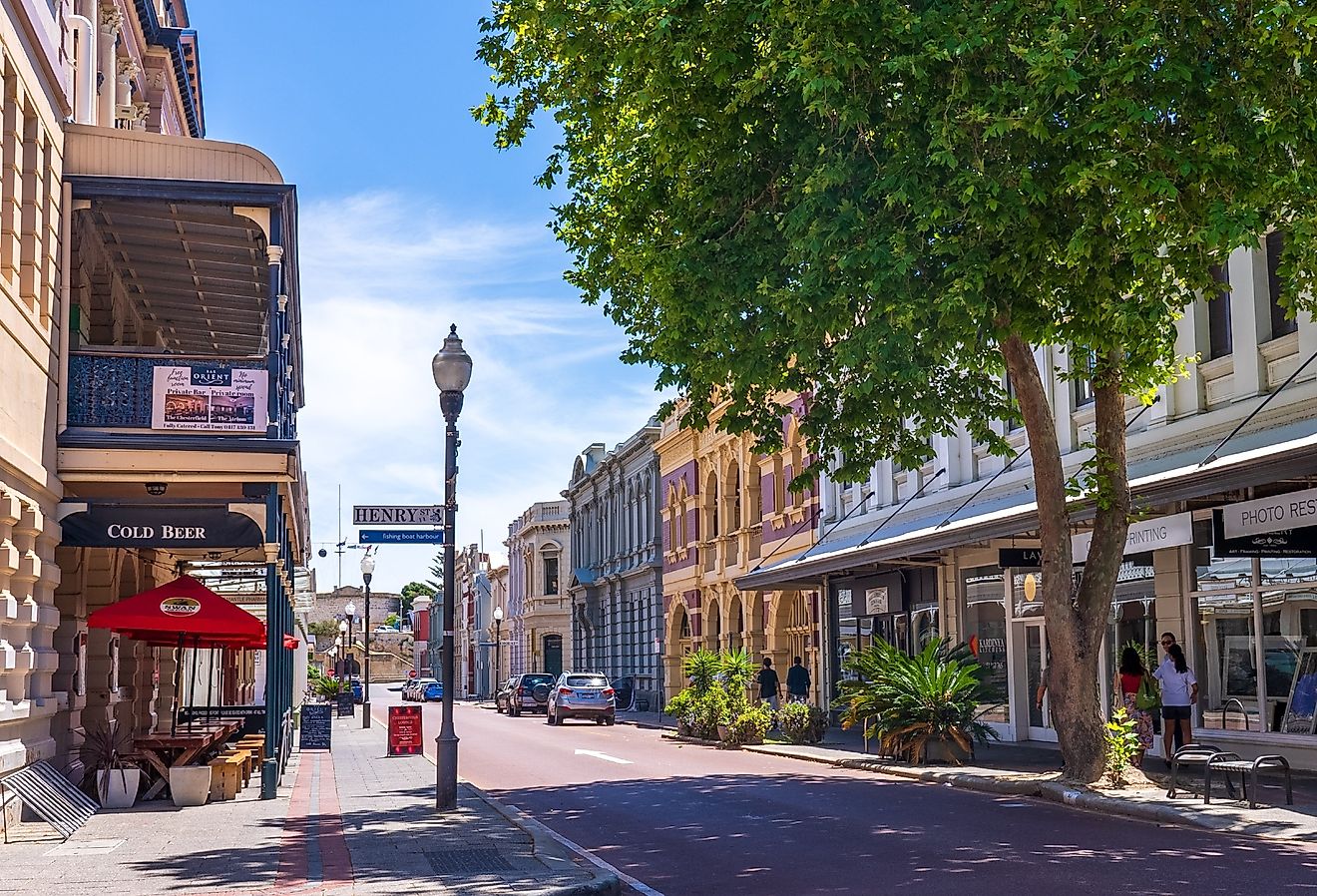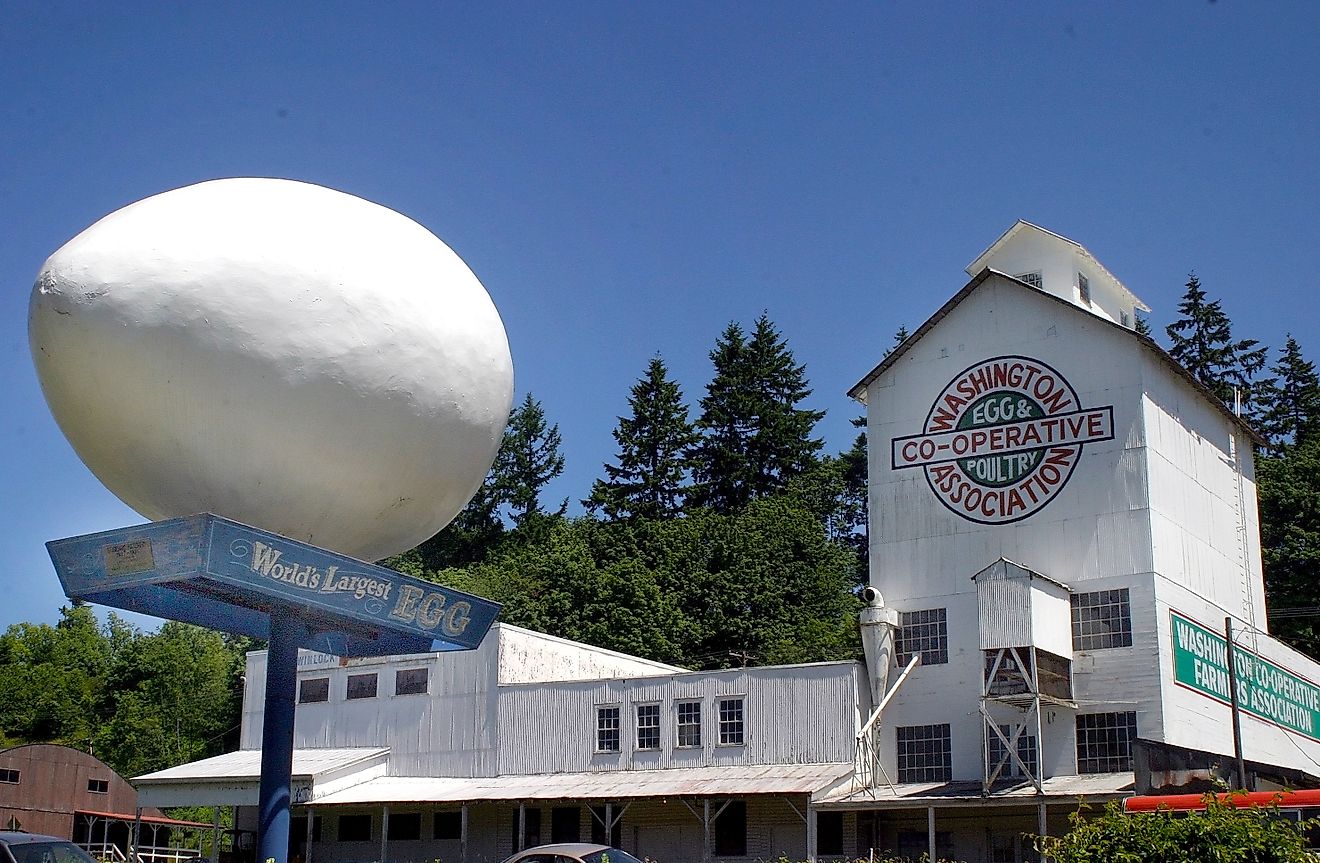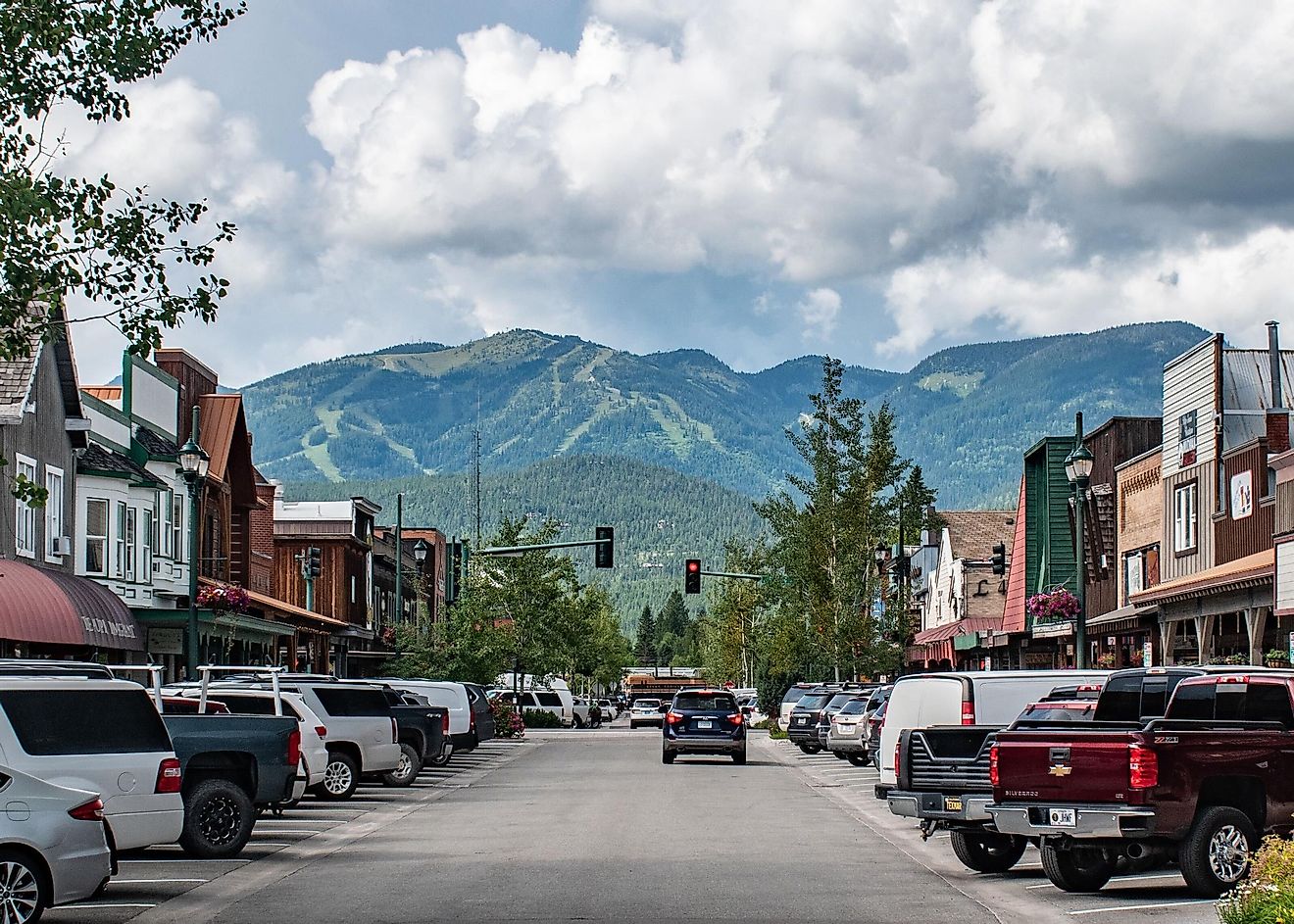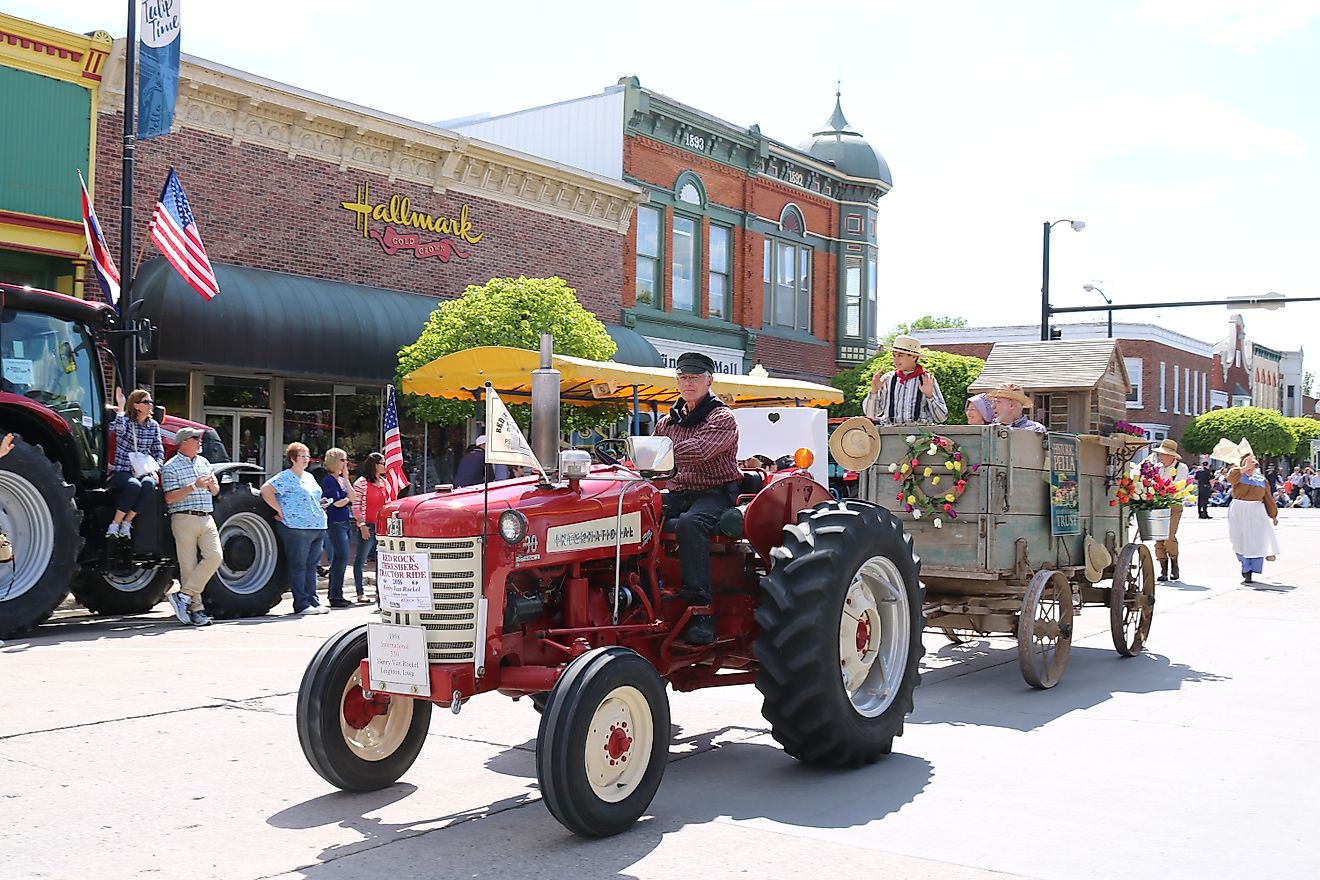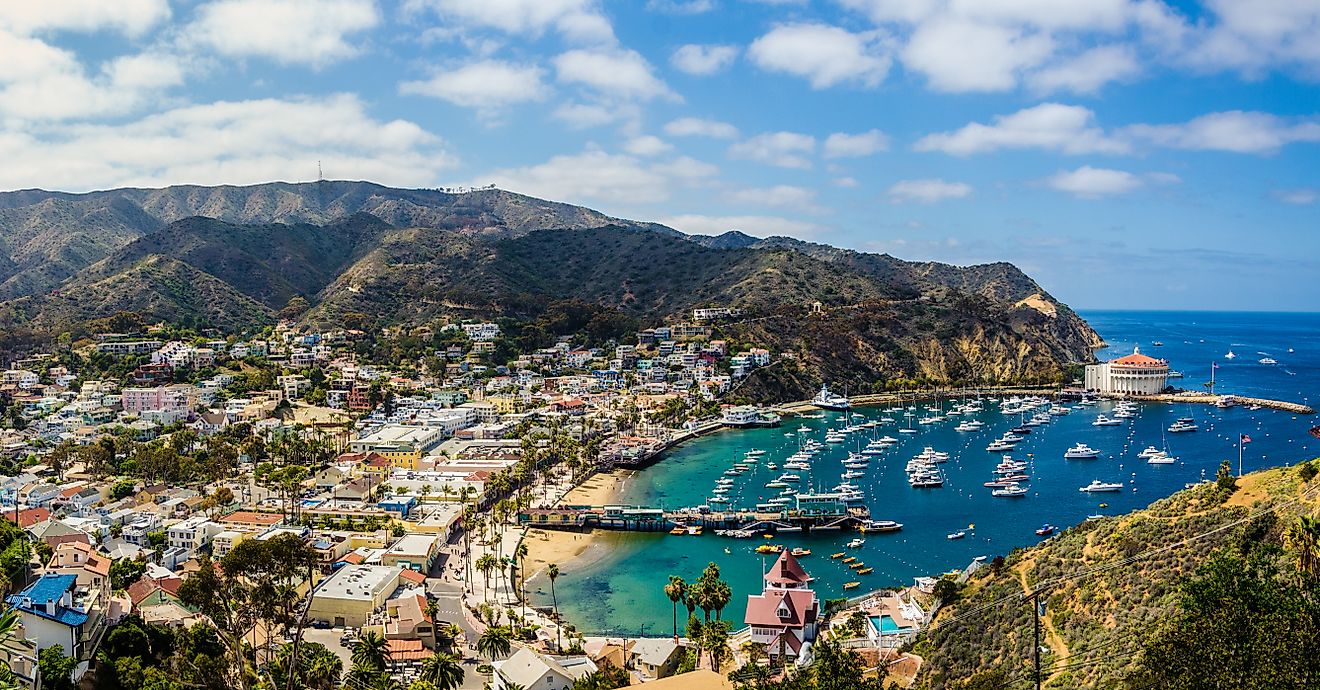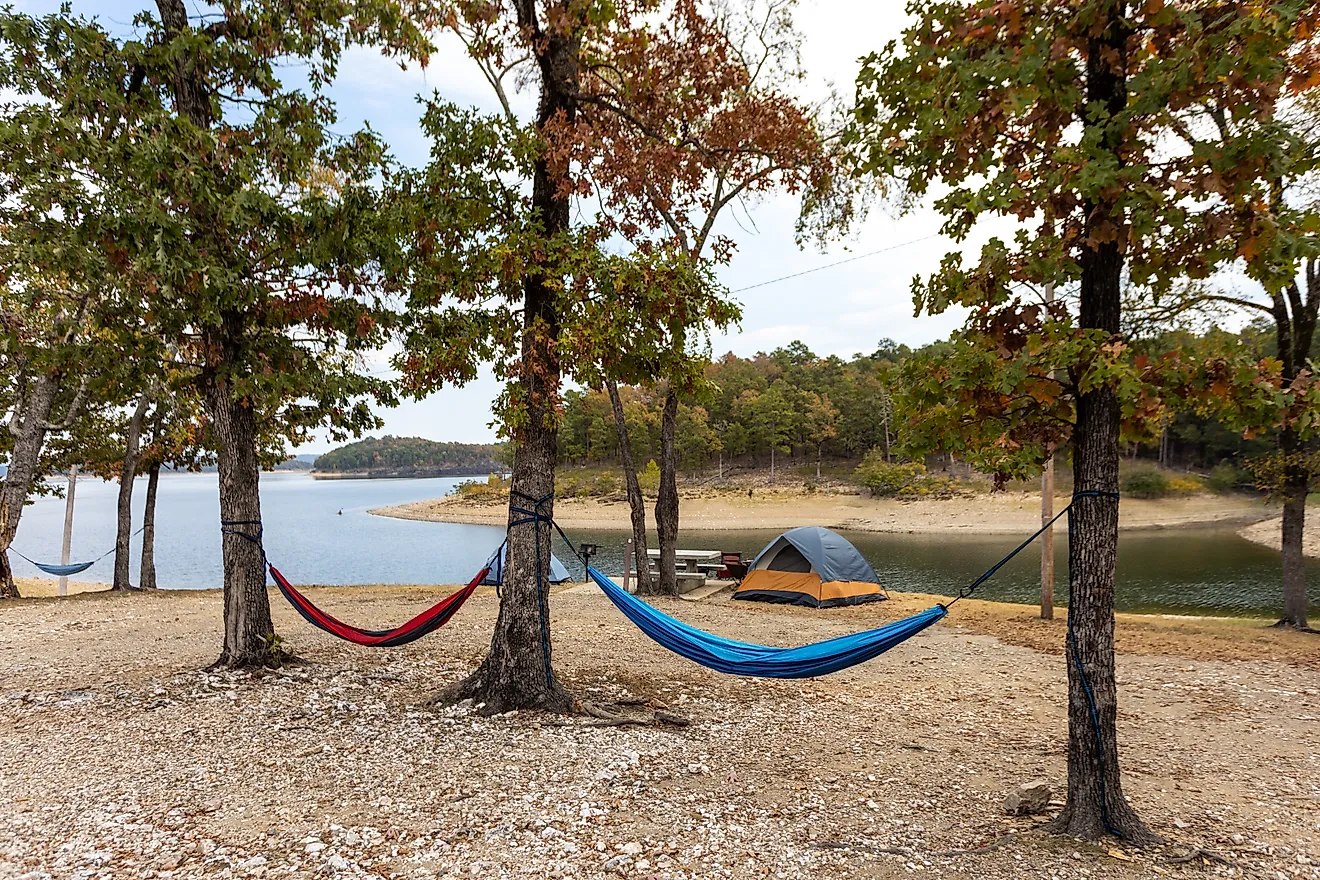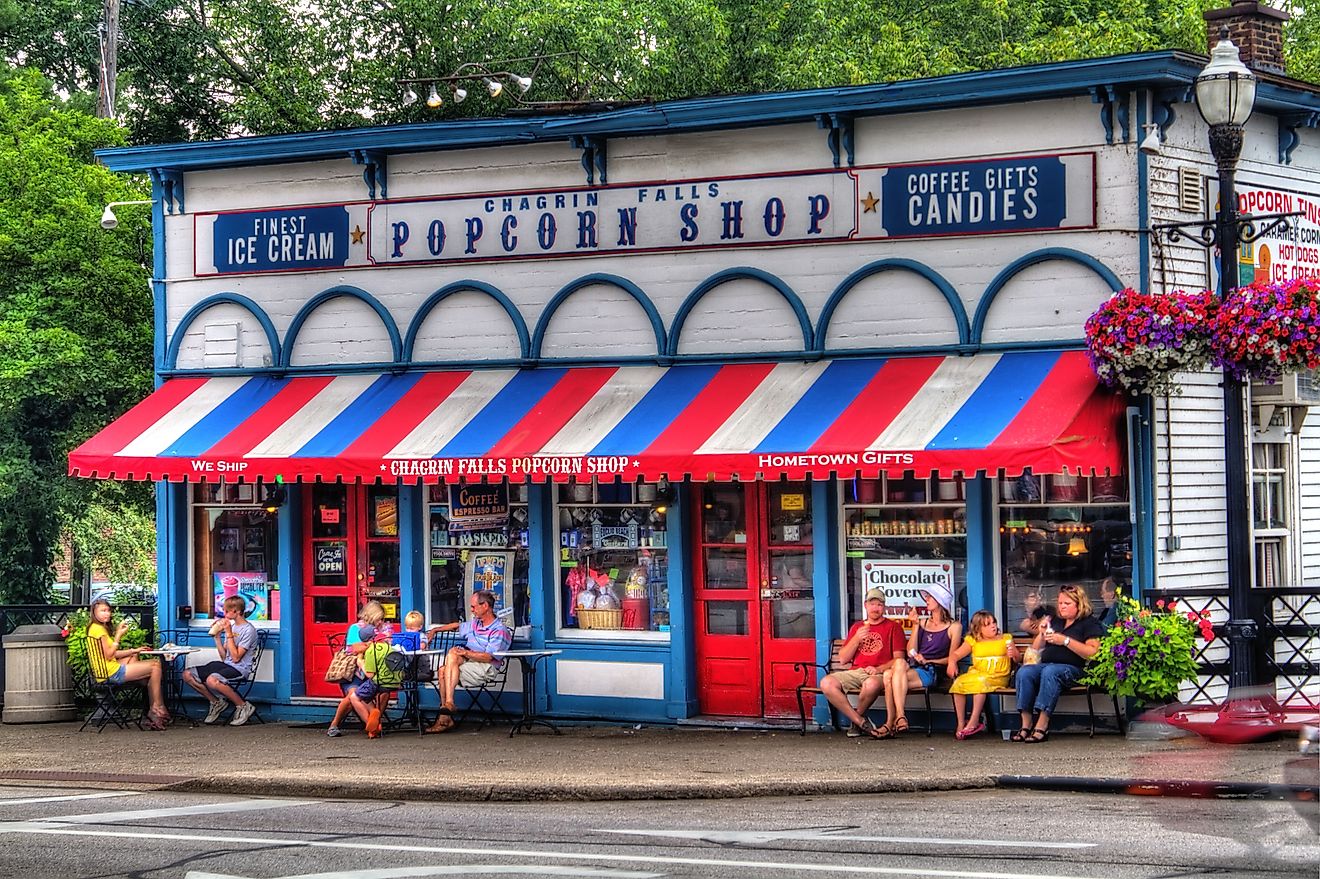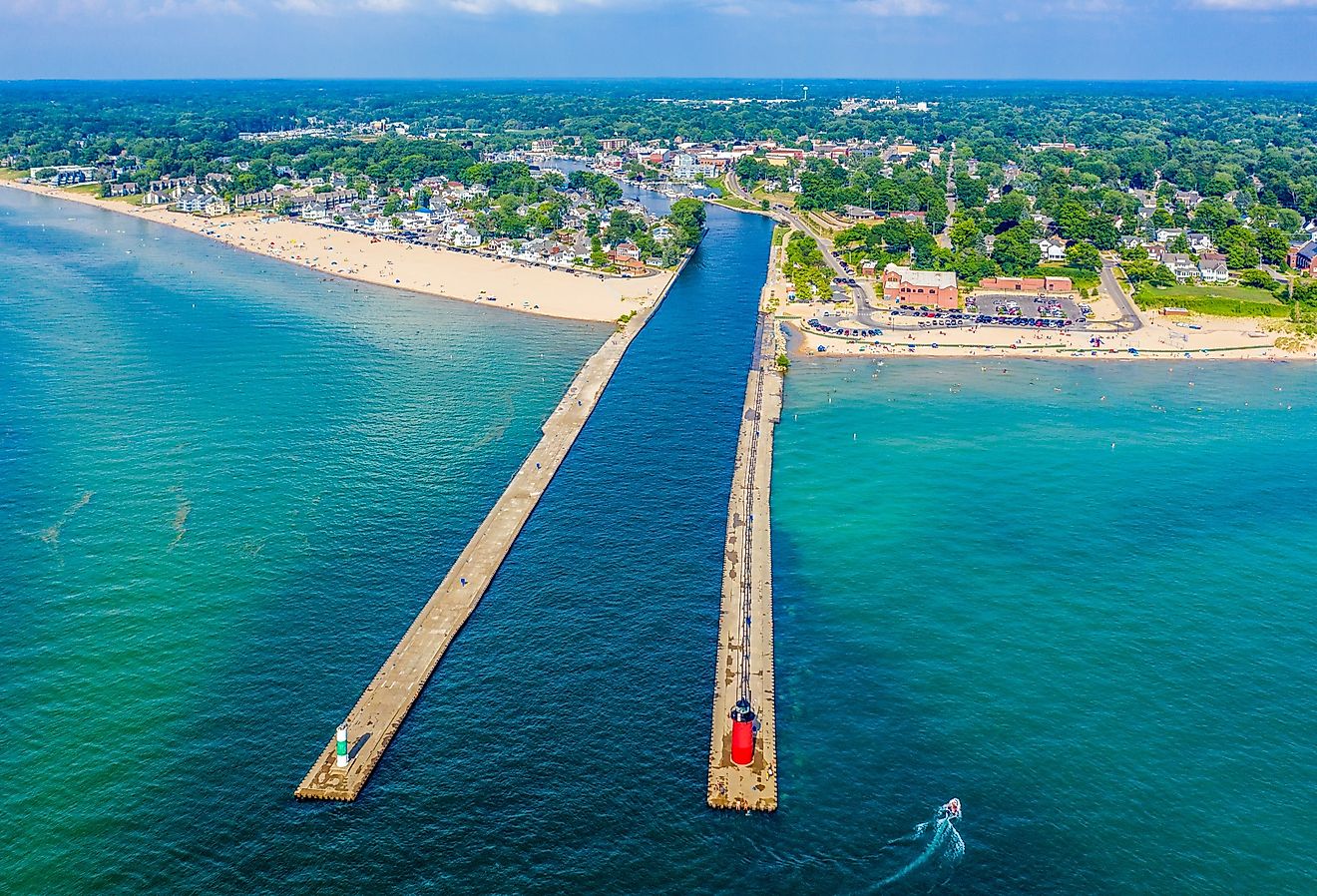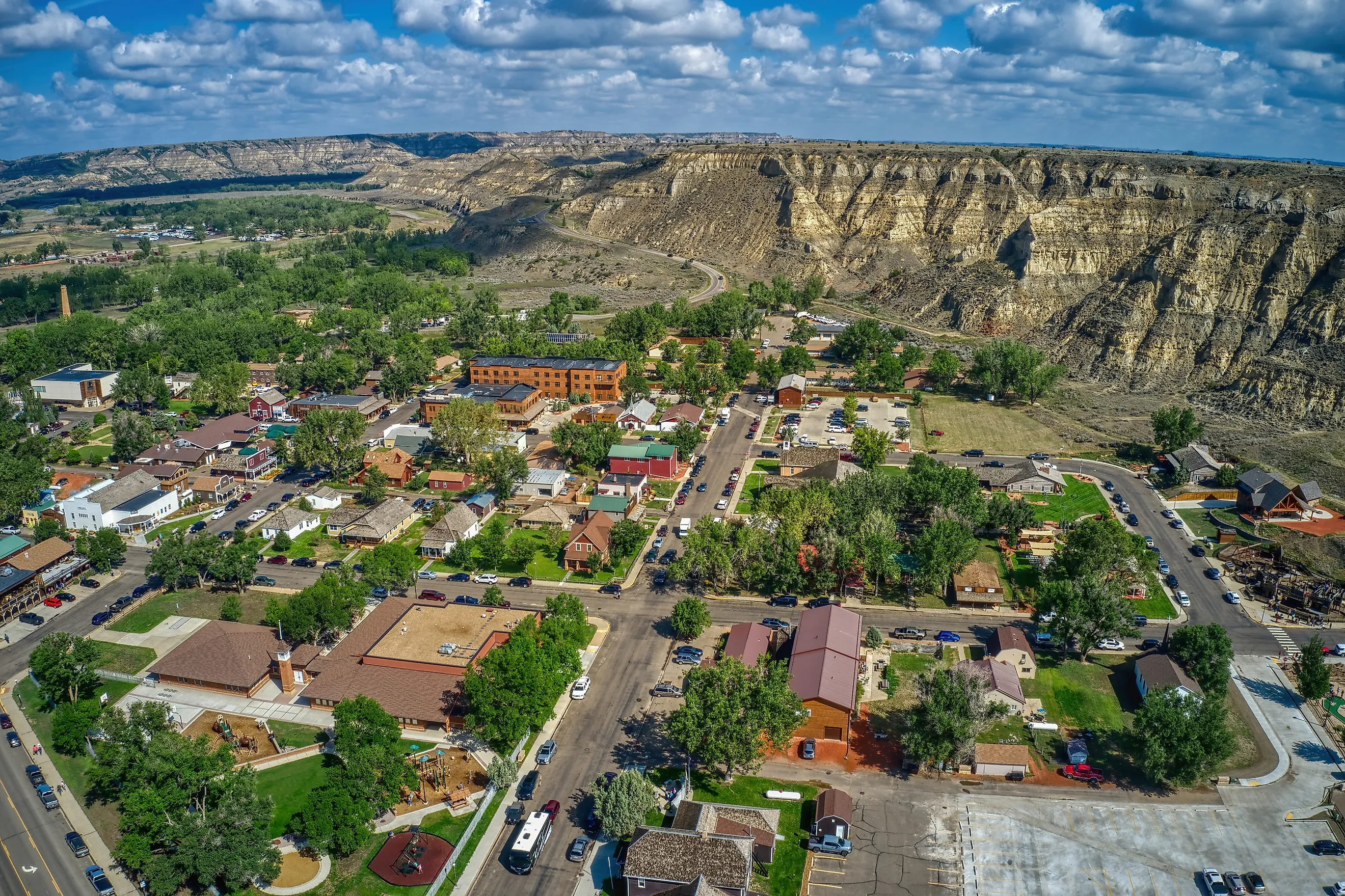
6 of the Quirkiest Towns in North Dakota
Like many of the other less-populated states, much of North Dakota is devoted to farms and ranches: In its case, nearly 90 percent. In fact, there’s so much open land in North Dakota that it is hailed as the top producer of honey in the United States, an essential role at a time when bee populations worldwide are a topic of concern for many.
But all that open space doesn’t mean there aren’t also plenty of unique places to visit or interesting sites to see. In fact, diving into the lesser-known parts of North Dakota unearths a plethora of quirky sites and towns perfect for year-round road trips or weekends away. So take a break from crowds and big cities to discover these one-of-a-kind spots in this often-overlooked state. Here are six of the quirkiest towns in North Dakota, home to the biggest roadside attractions or the most interesting historical monuments.
Jamestown
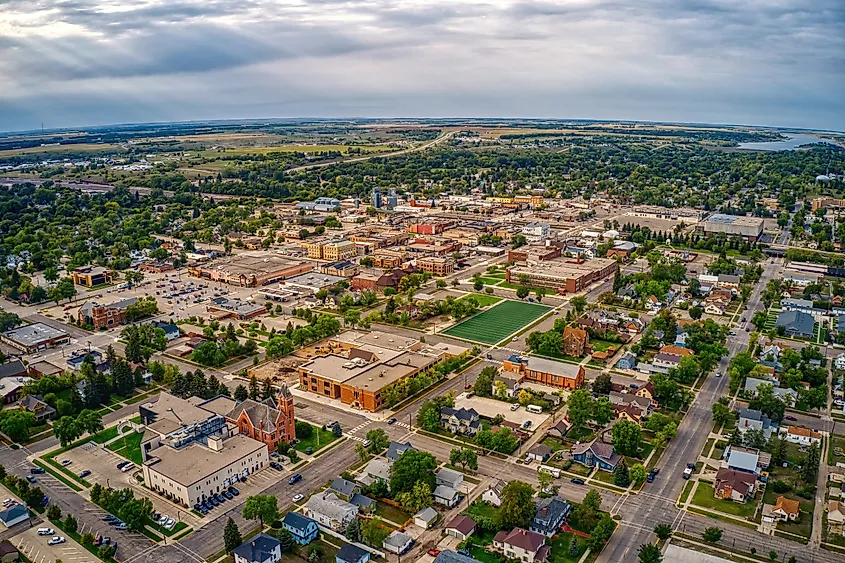
An aerial view of Jamestown, North Dakota, highlighting the town's layout and its proximity to Interstate 94.
In a state as wide open as North Dakota, large roadside attractions are even more impactful than elsewhere. As a result, they bring visitors to towns that may otherwise be overlooked and, in time, come to define the character of these towns that made them.
One of the most striking of these is Dakota Thunder, a 26-foot-tall concrete bison that is actually the largest of its kind in the world. Designed by Elmer Petersen and built in 1959, it weighs 60 tons and looms over the town from a hill. It stands overlooking the nearby National Buffalo Museum and a herd of bison just outside of town.
Literature-minded visitors to Jamestown flock to the Frontier Village, a small reconstructed village built to honor celebrated Western novelist Louis L’Amour. Along roads named after L’Amour are stops such as a historical saloon and the sheriff's office. Walking trails touch on other sites L'Amour visited.
Meanwhile, more outdoor activities like boating and fishing are occurring at the 2,492-acre Jamestown Reservoir. And, in addition to the regular offerings, the reservoir is home to a top-notch course for players of disc golf.
Mandan
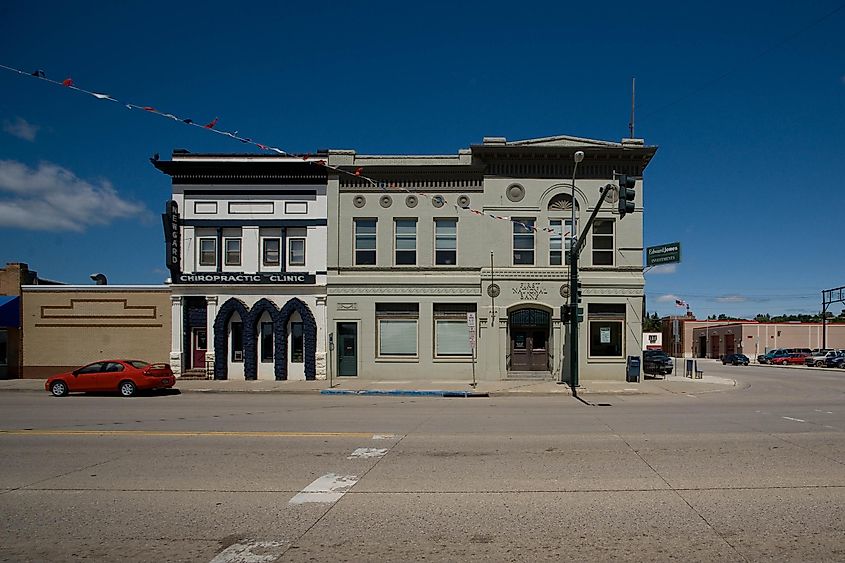
Just across the Missouri River from the state’s capital in Bismarck is the town of Mandan. Named after the Indigenous people who had long lived in the area, the settlement at Mandan became a railroad hub for the surrounding area, which included a vital army fort.
The restored Mandan village and army fort at Fort Abraham Lincoln State Park just south of the city still define a lot of the character of Mandan and are the focus of much of the tourism and commercial life of the town.
The old Mandan village is called On-a-Slant Village (or Miti O-pa-e-resh) because the land slopes down toward the river. Once home to a population of 1500 or so, it was a permanent settlement of around 85 earth lodges and a center of trade for the other nomadic nations of the plains. The residents there, though, farmed, fished, and hunted until they were killed or driven away by the smallpox epidemic in 1781.
Later, on the bluff above the abandoned On-a-Slant, the U.S. military founded an infantry post that grew into what became Fort Abraham Lincoln and included a cavalry post. At its height in the 1870s, it housed 650 men, making it one of the largest forts in the Northern Plains region, and it played an essential role in the government’s fight against the Indigenous nations. It was from here that George Armstrong Custer launched the ill-fated campaign that ended in the Battle of Little Big Horn. After being decommissioned in 1891, the building materials were reused by locals in all manner of construction projects.
Today, visitors to Fort Abraham Lincoln State Park can tour reconstructions of both the village and the fort, with six Earthlodges at On-a-Slant and quarters, barracks, stables, and more at the Fort.
New Salem
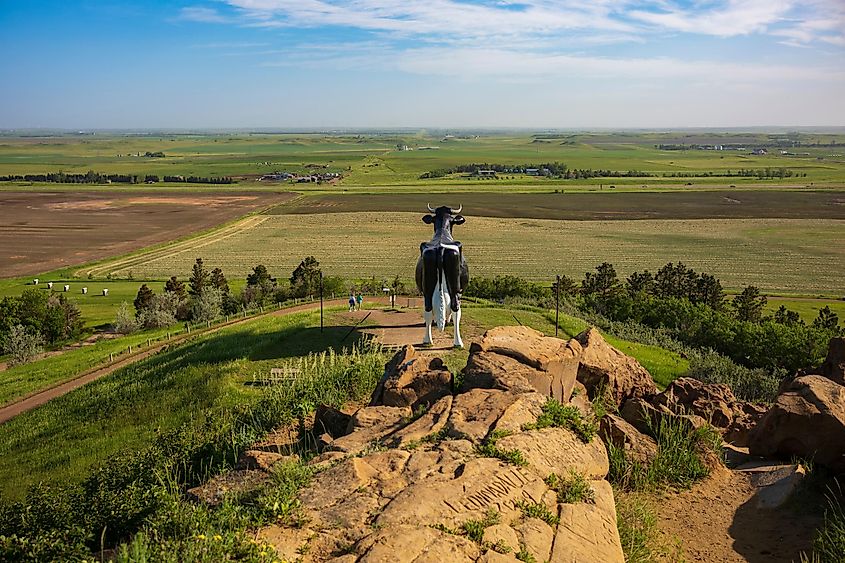
New Salem is a town that owes a lot to the dairy industry. This is evident in everything they do, including the name of the local school’s sports team, the Holsteins. But it is especially evident in the inescapable presence of the 38-foot-tall, 50-foot-long cow that watches over the town from the top of its only hill. Made of six tons of fiberglass, Salem Sue is the World’s Largest Holstein Cow and the largest of the animal monuments in the State, even larger than the bison in Jamestown. She’s so large she is visible up to five miles away and had to be brought up the hill in three separate sections. She now stands with a beautiful view of her town to honor the dairy farmers of New Salem’s past as well as some champion cows, who are mentioned on a plaque there by name.
Sue brings visitors to the town, but once there, they often visit the village-like New Salem Historical Society/Custer Trail Museum. Here, they can walk through many reconstructed buildings, including a school, railroad depot, turn-of-the-century house, and blacksmith shop.
Regent
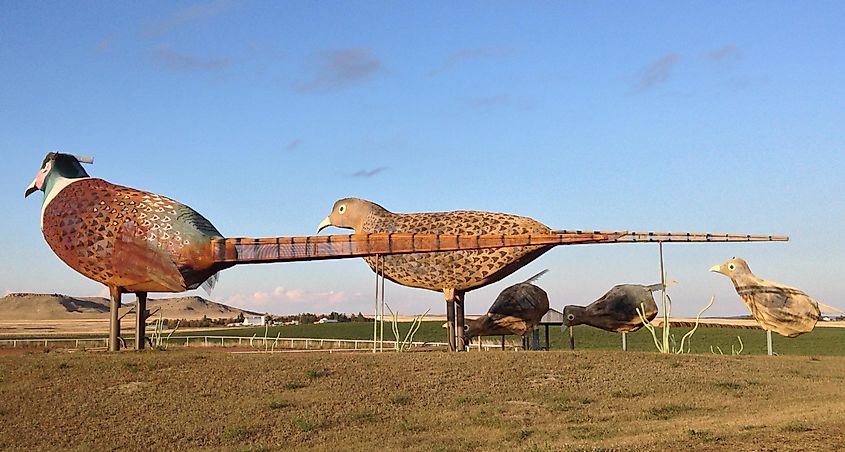
Seeing what one giant roadside attraction can do, Regent School principal Gary Greff was inspired to try to use some to save his declining farming town. This despite the fact he had never built anything of the like before.
And it worked. Driving south along county highway 21 from Gladstone to Regent, along what is now called The Enchanted Highway, stands no fewer than seven of the world’s most enormous scrap metal sculptures. For over a 32-mile stretch, each sculpture but the first has a parking lot and kiosk to accommodate the people wanting to get a closer look and, of course, take some pictures.
The first is Geese in Flight, which can be seen all the way from the interstate and was named by the Guinness Book of World Records as the largest scrap metal sculpture in the world in 2002. Other creations include World's Largest Tin Family, Pheasants on the Prairie, Fisherman's Dream, Theodore Roosevelt Rides Again, Grasshoppers in the Field, and Deer Crossing.
The Enchanted Highway did indeed help Regent stay afloat. The town runs a gift shop that sells miniatures of all of the seven sculptures, operates a campground for visitors, and most recently has opened the Enchanted Castle, a themed motel also the creation of Gary Greff. A white building with picture-perfect castle crenulations, the Enchanted Castle has a drawbridge, a tavern, and knights in armor.
Valley City
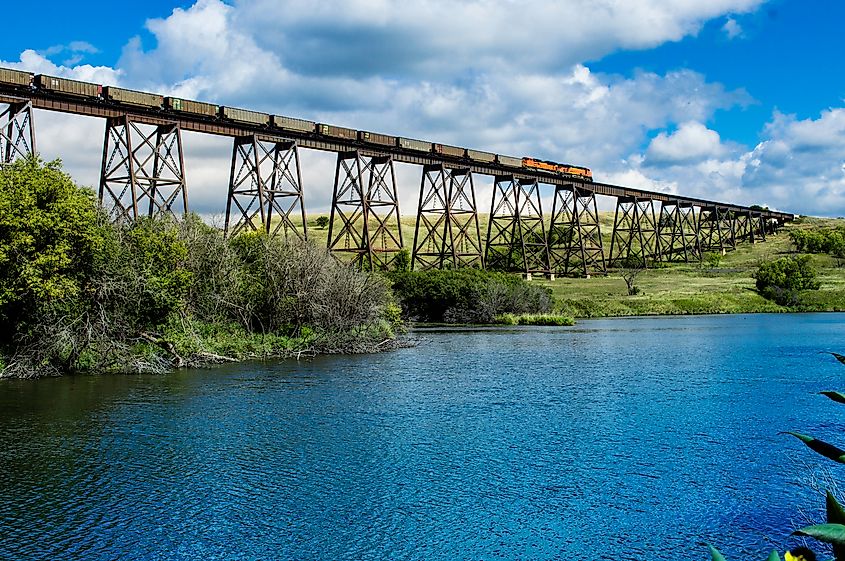
Another unique town in North Dakota is Valley City, or, as it’s affectionately known, the City of Bridges. Founded on the Sheyenne River, it has 11 historical bridges
The most spectacular of these is the almost 4,000-foot-long Highline Bridge (otherwise known as the Hi-Line Railroad Bridge). The steep banks at this part of the river were proving to be too tricky for most trains, so the High Line was built in 1908 at 162 feet above the river bed, making it one of the highest and longest in all of the US. In all, it contains 14 million pounds of steel and took a total of 160 men to build at a cost of $750,000.
Two other bridges found in Valley City are also unique in the state: the Rainbow Bridge and the Valley City State University (VCSU) Footbridge are both the only of their kind. In the case of the footbridge is a 150-suspension bridge.
The VCSU campus is also home to the 30-acre Medicine Wheel Park, which includes twelve ancient burial mounds of the type used for millennia by local nations and a 213-foot medicine wheel inspired by the famous Big Horn Medicine Wheel. With 28 spokes representing the days of the lunar month. Six spokes radiating from the outside of the wheel point to the spots of sunrises and sunsets on the solstices and equinoxes. The center of the wheel also serves as the sun in a walkable model of the solar system stretching a third of a mile, with boulders serving as the planets.
Valley City is also a popular access point for the North Country National Scenic Trail and the Sheyenne River Valley National Scenic Byway.
Medora
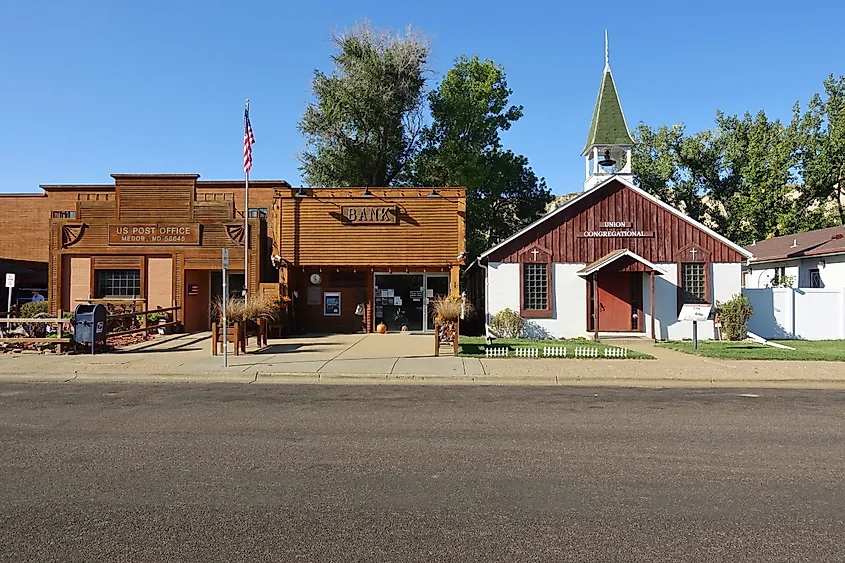
In the middle of the unspoiled North Dakota Badlands is the cowboy town of Medora. The area was once the beloved home of the future President Theodore Roosevelt. The national park named in his honor seeks to preserve the stunning and unique natural landscape of buttes and painted canyons, home to wild bison, horses, and deer for future generations.
Scenic overlooks abound, and attractions like the Bully Pulpit Golf Course and the Burning Hills Amphitheater on the bluffs over the town amphitheater use the vistas to great effect. The Amphitheater is home to the Medora Musical, a daily summertime outdoor country-western musical show dedicated to Roosevelt featuring singing and dancing, live horses, and a reenactment of the battle of San Juan Hill.
No visit to Medora would be complete without a stop at the North Dakota Cowboy Hall of Fame, which seeks to preserve and educate visitors on the history of plains horse culture through the stories of local nations, homesteaders, and cowboys.
Endless Charm in North Dakota
Despite the comparative lack of skyscrapers on the skyline, there is no shortage of unique sites in North Dakota, especially when it comes to the natural beauty and history of the state. In fact, far from being a drawback, the wide open spaces and quieter cities are a significant draw for many. As such, many North Dakota towns seek to preserve both their land and history while also coming up with imaginative ways to increase the number of visitors they welcome. Any of these six quirky towns would be enjoyable places for a road trip stop, a weekend, or an extended stay.
